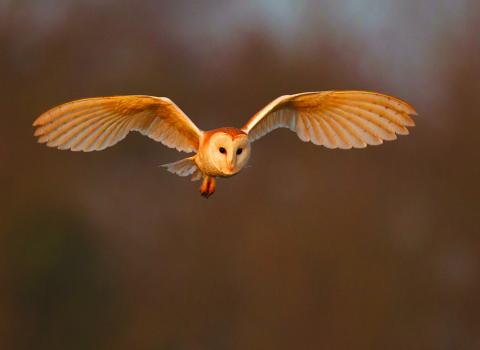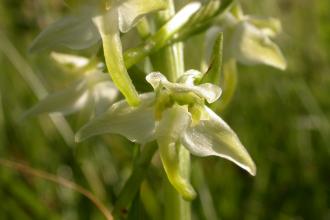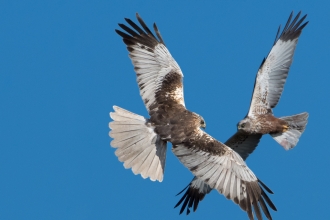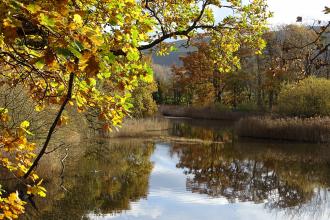Barn owls
The barn owl is a distinctive bird. Famously hunting on silent wings, they swoop down on their prey unannounced; a soft fringe along the outside of their flight feathers absorbing the noise of their flight. Undisturbed by the sound of their wings flapping, they listen out for the rustling of small mammals in the grass. If you’ve never seen a barn owl before, then winter can be a great time of year to look, as they often extend their hunting hours into daylight to find the extra food they need to get them through the colder months.
Cors Goch, on Anglesey, is one of our best reserves to see them as they hunt as dusk falls
Find barn owls
Barn owls can be seen across North Wales, particularly where farmers and landowners manage grassland edges, drains and field boundaries to benefit the field vole and other prey and put up nesting boxes. You can see them throughout the wider landscape as they hunt alongside ditches, tracks and roads, particularly at first dusk. Cors Goch, on Anglesey, is one of our best reserves to see them as they hunt as dusk falls.
How to do it
Barn owls feed almost entirely on small mammals and, as half of their diet is made up of field voles, your best chance of seeing this silent hunter is in areas of rough grassland; a vole's favourite habitat. Like many owls, barn owls find it harder to hunt in windy conditions, so still evenings are best to try to spot them. Scan the sheltered side of fields in the lea of hedgerows for your best chances. If a barn owl is hunting nearby, you may be able to attract it closer by making a squeaking noise by kissing the back of your hand - the owl may come over to see what’s making the noise. Don't forget to listen out too - barn owls don't hoot; they screech.
If you can't get to these places
Two other daytime hunting owls to look out for are the short-eared owl, which especially likes moorland and coastal flood meadows, and the diminutive little owl, who especially likes to hunt from veteran trees along old hedgerows.
More wildlife experiences
From seeing colourful wildflowers to spotting magnificent birds of prey, we can help you get closer to wildlife across North Wales.








